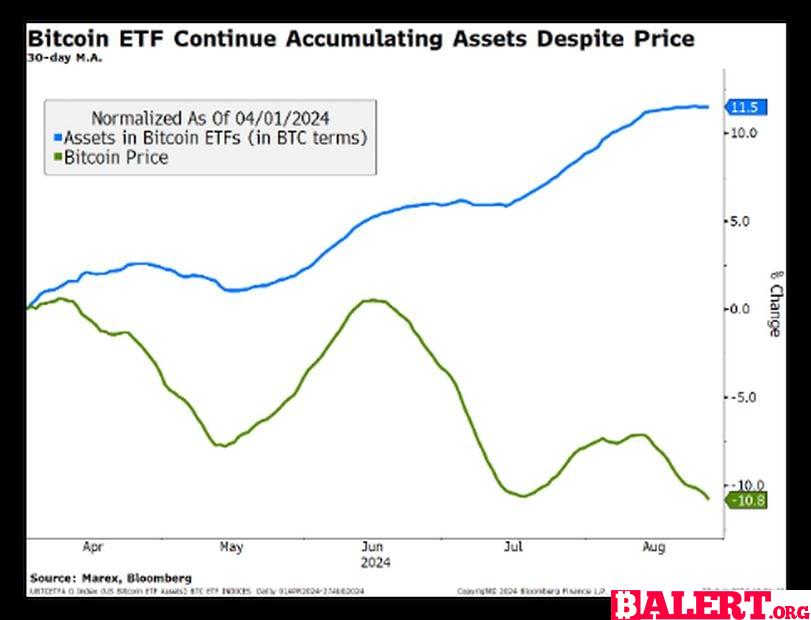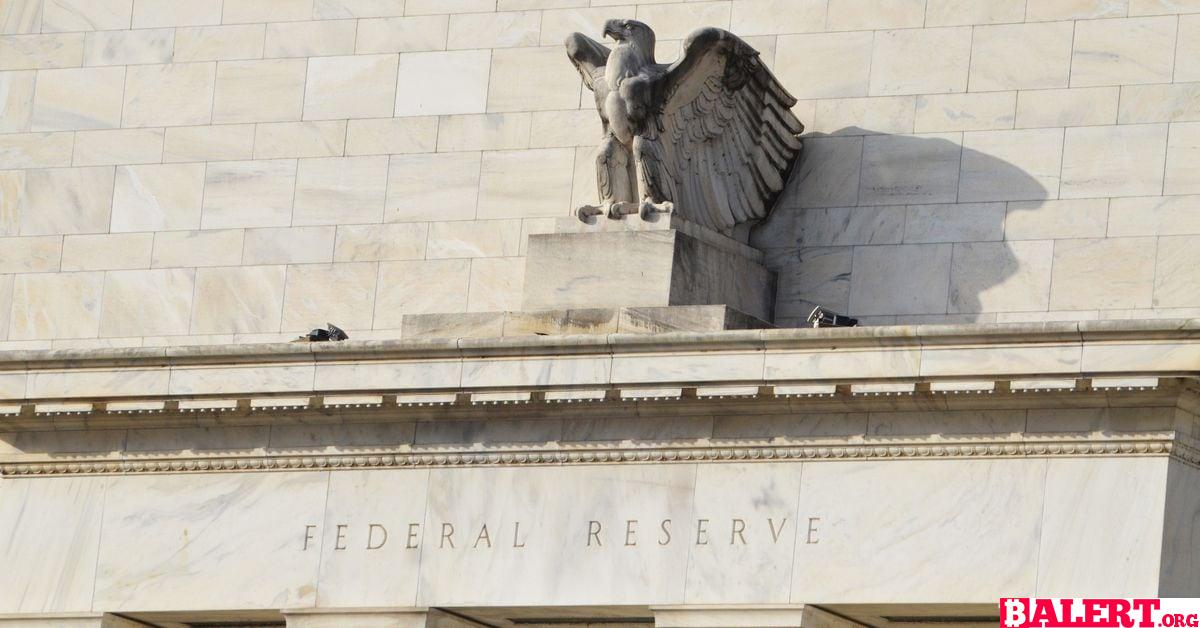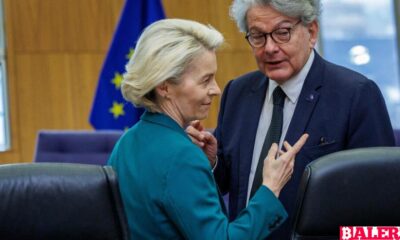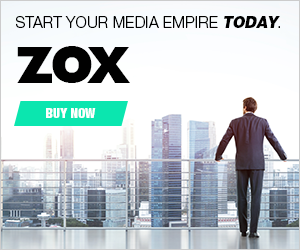Business
The Evolving Roles of Gold and Bitcoin as Stores of Value
Explore how gold and Bitcoin are adapting as stores of value in today’s financial landscape. Discover the historical significance of gold and the emerging role of Bitcoin in investment strategies and economic stability.

The Evolving Landscape of Gold and Bitcoin as Stores of Value

In this edition, Ilan Solot from Marex Solutions delves into the intricate roles of gold and bitcoin as stores of value. He explores how these roles are not static but evolve over time, influenced by various market dynamics. Following this, DJ Windle from Windle Wealth elaborates on the similarities and differences between bitcoin and gold in the Ask an Expert section.
– Sarah Morton
You’re reading Crypto for Advisors, CoinDesk’s weekly newsletter that unpacks digital assets for financial advisors. Subscribe here to receive it every Thursday.
The Weakening Store of Value Argument for Gold and Bitcoin

Summary: The recent approvals of bitcoin and Ethereum ETFs might signify a transformative shift in the market akin to the changes seen in gold markets following the actions of central banks after 2022. This shift could temporarily eclipse traditional narratives, including the long-held “store of value” concept.
The August market sell-off left many supporters of bitcoin’s store-of-value proposition disheartened. Despite a notable downturn in cryptocurrency values, gold experienced a rally during this period. To add to the disappointment, bitcoin struggled to regain momentum even when other markets rebounded. Interestingly, while gold prices appreciated, it too may be losing some of its status as a reliable store of value. Starting around 2022, the connection between price and narrative began to diverge. Traditional investors continued their long-standing trend of offloading gold as real yields and inflation expectations increased in anticipation of central bank tightening. However, this time, gold prices behaved unexpectedly.
What is causing gold’s price to remain unresponsive to its store of value macro drivers? A significant change in market structure occurred when Asian central banks ramped up gold purchases in the wake of geopolitical tensions, particularly following Russia’s invasion of Ukraine and the subsequent freezing of its foreign exchange reserves. This development suggests that these governments are pursuing their own narratives regarding gold’s value.
From the perspective of Russian, Indian, and Chinese policymakers, gold’s appeal as a “store of value” may not align with Western investors’ views. Factors such as Federal Reserve policies, inflation expectations, and libertarian principles may not significantly sway the accumulation and eventual utilization of their gold reserves.
Over time, the acceptance of crypto ETFs in the U.S. may mirror the market structure disruptions previously witnessed in gold. This could alter the prevailing narratives surrounding bitcoin as a store of value and Ethereum as a technological asset, aligning them closer to traditional investment vehicles. In essence, ETF investors may adopt different narratives and demand patterns—such as portfolio rebalancing or disposable income considerations—compared to those who are deeply rooted in the crypto ecosystem, much like how Asian central banks buy gold for reasons distinct from traditional investors.
The recent data regarding ETFs and bitcoin prices appears to support this perspective. Despite recent volatility and shifting narratives surrounding bitcoin, ETFs have continued to attract substantial inflows. While this observation is based on a relatively short timeframe and should be interpreted cautiously, it seems to indicate a directional trend. Notably, the effects of Grayscale outflows in BTC and ETH provide insights into how ETF flows, which can be considered cycle-agnostic, may influence price movements.
Does this imply that gold and bitcoin are no longer valid stores of value? Not necessarily. It’s important to recognize that narratives can coexist, evolve, weaken, and take turns in influencing market prices. Nevertheless, the introduction of significant and diverse investor groups into the markets for both assets is likely to dilute the original narratives and alter price responses to macroeconomic events.
– Ilan Solot, Senior Global Market Strategist, Marex Solutions
Ask an Expert

- Q. What is a store of value?
- A. A store of value is an asset that can be saved, retrieved, and exchanged in the future without significantly diminishing its purchasing power. Traditionally, assets such as gold, real estate, or stable currencies have served this purpose, as they tend to retain value over time, even during market downturns. While they can experience short-term volatility, the core idea is to offer protection against inflation, currency devaluation, and economic instability, allowing investors to preserve wealth across generations.
- Q. How is bitcoin similar to gold?
- A. Bitcoin and gold share several characteristics that render them appealing as stores of value. Both are finite in supply—gold due to its natural scarcity and bitcoin because of its capped supply of 21 million coins. Neither asset is controlled by any central government, making them attractive alternatives to conventional fiat currencies. However, both bitcoin and gold come with their unique security risks that investors must consider. During times of economic uncertainty or inflation, investors often flock to these assets to maintain value, viewing them as hedges against market volatility and loss of purchasing power.
- Q. How is bitcoin different from gold?
- A. Bitcoin introduces several attributes that gold lacks. As a digital asset, bitcoin can be transferred globally within minutes, in stark contrast to gold, which is cumbersome and expensive to transport. The underlying blockchain technology of bitcoin ensures transparency, allowing for verifiable ownership and transactions. Additionally, bitcoin is programmable, enabling integration into digital applications like smart contracts and decentralized finance (DeFi) platforms, enhancing its versatility in the modern financial landscape. These features position bitcoin as an innovative alternative extending beyond the conventional uses of gold.
– DJ Windle, Founder and Portfolio Manager, Windle Wealth
Keep Reading
Business
Bhutan’s Strategic Investment in Bitcoin: A New Era for the Himalayan Kingdom
Explore how Bhutan is embracing Bitcoin as a strategic investment, marking a transformative shift for the Himalayan kingdom. Discover the implications of this move on its economy, sustainability, and future in the digital age.

Buddhist Kingdom’s Bold Move into Bitcoin
A stunning landlocked nation nestled between India and China, Bhutan has made headlines by accumulating significant bitcoin (BTC) holdings totaling over $780 million in recent years. This amount represents nearly one-third of the country’s gross domestic product (GDP), positioning Bhutan as the holder of the fourth-largest state-owned stash of BTC, as revealed by the on-chain analytics tool Arkham.
Known for its unique approach to governance, Bhutan emphasizes the happiness of its fewer than 900,000 citizens as a more meaningful metric of well-being than traditional economic indicators. This Himalayan kingdom has become the second nation, following El Salvador, to officially embrace BTC as part of its national strategy, incorporating it into the state-owned Druk Holdings fund.
According to Arkham, Bhutan has established bitcoin mining facilities across various locations, with the most significant operation situated on the site of the now-defunct Education City project. Unlike many governments that acquire BTC through asset seizures related to law enforcement, Bhutan’s holdings have originated from extensive bitcoin mining activities, which have seen a remarkable increase since early 2023.
These mining operations are likely connected to Bitdeer (BTDR), a prominent player in the cryptocurrency mining sector. In 2023, the Singapore-based firm announced its collaboration with the Bhutanese government to develop cryptocurrency mining operations in Southeast Asia, successfully raising over $500 million for this ambitious venture. Following this announcement, Bitdeer disclosed that it had completed the first phase of a 100 megawatt (MW) mining facility.
Looking ahead, Bitdeer announced plans to expand Bhutan’s mining capacity to a staggering 600 MW by 2025, reflecting the growing significance of this initiative.
Despite its small geographic size, even smaller than Switzerland, Bhutan faces challenges such as limited economic diversification and an underdeveloped private sector. The nation primarily relies on sectors like hydropower, tourism, and agriculture to generate revenue. In 2022, Bhutan’s GDP was recorded at just under $3 billion, approximately half that of the Maldives.
To bolster its economy, Druk Holdings is exploring opportunities across various sectors. The organization’s website highlights “digital assets” as a key focus area in its technology-driven investment strategy, which also includes projects in hydropower and emerging digital realms like the metaverse.
Recent activities in the Druk wallets, as monitored by Arkham, indicate a flurry of deposit and withdrawal transactions in recent weeks. The fund has received multiple deposits of up to 2 BTC from Foundry, another mining entity, as well as from other unidentified bitcoin addresses during the past week. Additionally, Druk Holdings has periodically transferred bitcoin to various addresses, including crypto exchanges. One notable transaction from early July involved a transfer of over $25 million worth of BTC sent to the crypto exchange Kraken, suggesting that it was likely sold to capitalize on market conditions.
Business
Bitcoin and Crypto Markets React to Anticipated Federal Rate Cuts
Explore how Bitcoin and cryptocurrency markets are responding to the anticipated Federal rate cuts. Discover the implications for investors and the broader financial landscape in this insightful analysis.

Bitcoin and Crypto Markets Await Federal Rate Cuts
Bitcoin (BTC) and the broader cryptocurrency markets have seen minimal fluctuations over the past 24 hours as traders remain cautious ahead of the upcoming Federal Open Market Committee (FOMC) meeting on Wednesday. This meeting is particularly significant, as officials are anticipated to announce the first interest rate cuts in four years. Currently, Bitcoin is trading just below $58,500, specifically at $58,480, reflecting a relatively stable performance. The CoinDesk 20 (CD20), a benchmark for the largest digital assets, has experienced a slight increase, trading above the 1,800 mark.
In terms of daily activity, inflows into Bitcoin exchange-traded funds (ETFs) have amounted to $12.9 million, with a substantial portion directed towards BlackRock’s IBIT. Analysts widely expect the Fed to unveil a rate cut on September 18, signaling the beginning of a potential easing cycle that has historically provided support for risk assets, including Bitcoin.
As of Tuesday morning in Asia, the 30-Day Fed Funds futures prices indicate that traders perceive a 67% likelihood of a significant 50 basis points rate cut, bringing the target range to 4.7%-5%. This is an increase from Monday’s implied probability of 50% and a notable rise from the 25% probability reported a month ago. On Polymarket, traders are assigning a 57% chance of a decrease exceeding 50 basis points, alongside a 41% chance of a 25 basis points cut.
Meanwhile, the overall market remains relatively stable. Noteworthy movements have been observed, such as XRP rising by 3.5%, SUI increasing by 2.5%, and Fantom’s FTM surging by 10.5%, buoyed by positive market sentiment surrounding its forthcoming rebranding to Sonic.
Trump’s World Liberty Financial to Introduce WLFI Token
In other news, the team behind World Liberty Financial, a project receiving endorsement from former President Donald Trump and his family, has announced the launch of a governance token. However, it is crucial to note that this token will only be available to accredited U.S. investors. During a livestream that lasted over two hours, the team highlighted that the token is intended for governance participation rather than for economic profit and did not disclose a specific launch date during the X Spaces stream.
Throughout the livestream, Trump himself did not specifically mention the token or provide an endorsement. Instead, he reiterated his general views on cryptocurrency policy, much of which echoed his previous public statements, including those made at the recent Bitcoin Conference held in Nashville.
Figure Markets Launches Exchange with Real Estate-Backed Yields
In a groundbreaking development within the crypto space, Figure Markets has announced the launch of its exchange, coinciding with the Token2049 event in Singapore. Founded by Mike Cagney, a co-founder of SoFi, Figure Markets introduces an innovative method for generating yields for users who store their cryptocurrency on the platform.
According to a recent release, Figure Markets claims it can offer returns of up to 8% for non-USD and stablecoin balances. This is achieved by leveraging a fund backed by real-world assets, particularly home equity loans. The operational model involves traders depositing their funds into Figure Markets, which are then pooled and lent to Figure Technologies for the issuance of secured home equity loans. The interest paid by borrowers on these loans creates a spread that not only covers operational costs but also provides returns to investors. These investors benefit from dual recourse protections, daily liquidity, and interest payments that accrue based on the duration of their investments.
While Real World Assets (RWAs) are progressively becoming a noteworthy aspect of the cryptocurrency industry, there are still very few applications that seek to derive yield from these assets to support their operations. Prior to the launch of Figure in 2023, Cagney had withdrawn the company’s bid for a U.S. federal bank charter amid regulatory scrutiny, opting instead to pursue partnerships with established banks.
Business
Meta Bans Russian Media Outlets Amid Disinformation Concerns
In response to rising disinformation concerns, Meta has imposed bans on several Russian media outlets. This decision highlights the ongoing battle against misinformation and the platform’s commitment to ensuring accurate information for its users.

Meta Takes Strong Action Against Russian Media Outlets
On Monday, Meta announced a significant initiative to prohibit Russian media outlets, including the state-funded television network RT, from utilizing its platforms. This decision comes in light of ongoing scrutiny in the United States regarding these outlets’ involvement in covert influence campaigns designed to manipulate online discourse across various social media platforms.
Meta, the parent company of popular applications such as Facebook, Instagram, and WhatsApp, stated that the ban would be implemented in the coming days. This decisive action marks an escalation in the ongoing efforts to combat Russian state media actors, which U.S. intelligence officials have identified as key players in disinformation operations that span the globe, infiltrating the world’s largest social networking sites.
In a formal statement, Meta expressed, “After thorough consideration, we have expanded our current enforcement measures against Russian state media outlets. Rossiya Segodnya, RT, and other related entities are now prohibited from our applications worldwide due to their involvement in foreign interference activities.”
Recently, U.S. authorities have tightened their grip on RT, particularly for its attempts to meddle in the upcoming presidential election scheduled for November. On Friday, the United States, in conjunction with Canada and Britain, accused RT of functioning as a conduit for Russian intelligence agencies. They announced new sanctions aimed at curtailing international funding sources that support disinformation campaigns globally.
This crackdown follows the federal indictment of two RT employees, who allegedly funneled at least $9.7 million to finance American podcasters on Tenet Media, a video-streaming service based in Tennessee. The goal was to amplify the Kremlin’s propaganda and undermine the integrity of the American democratic process.
Secretary of State Antony J. Blinken emphasized the broader implications of these tactics, stating, “We’re revealing how Russia employs similar strategies globally.” He further noted, “The Russian weaponization of disinformation to destabilize and polarize free and open societies is a challenge that impacts every corner of the world.”
-

 Business5 months ago
Business5 months agoThe Significance of Jackson Hole: A Central Banking Tradition
-

 Tech4 months ago
Tech4 months agoNew Leaks and Features About the Samsung Galaxy S25 Ultra
-

 Business6 months ago
Business6 months agoObituary: Dan Collins
-

 Article7 months ago
Article7 months agoCreative Design Applications Developed with Artificial Intelligence
-

 Business4 months ago
Business4 months agoBhutan’s Strategic Investment in Bitcoin: A New Era for the Himalayan Kingdom
-

 World4 months ago
World4 months agoThierry Breton Resigns: Impact on European Union Leadership
-

 Gaming4 months ago
Gaming4 months agoNew Details and Trailer Released for Dead Rising Deluxe Remaster
-

 Gaming4 months ago
Gaming4 months agoNew Details for Alan Wake 2 and PlayStation 5 Pro Announcement









